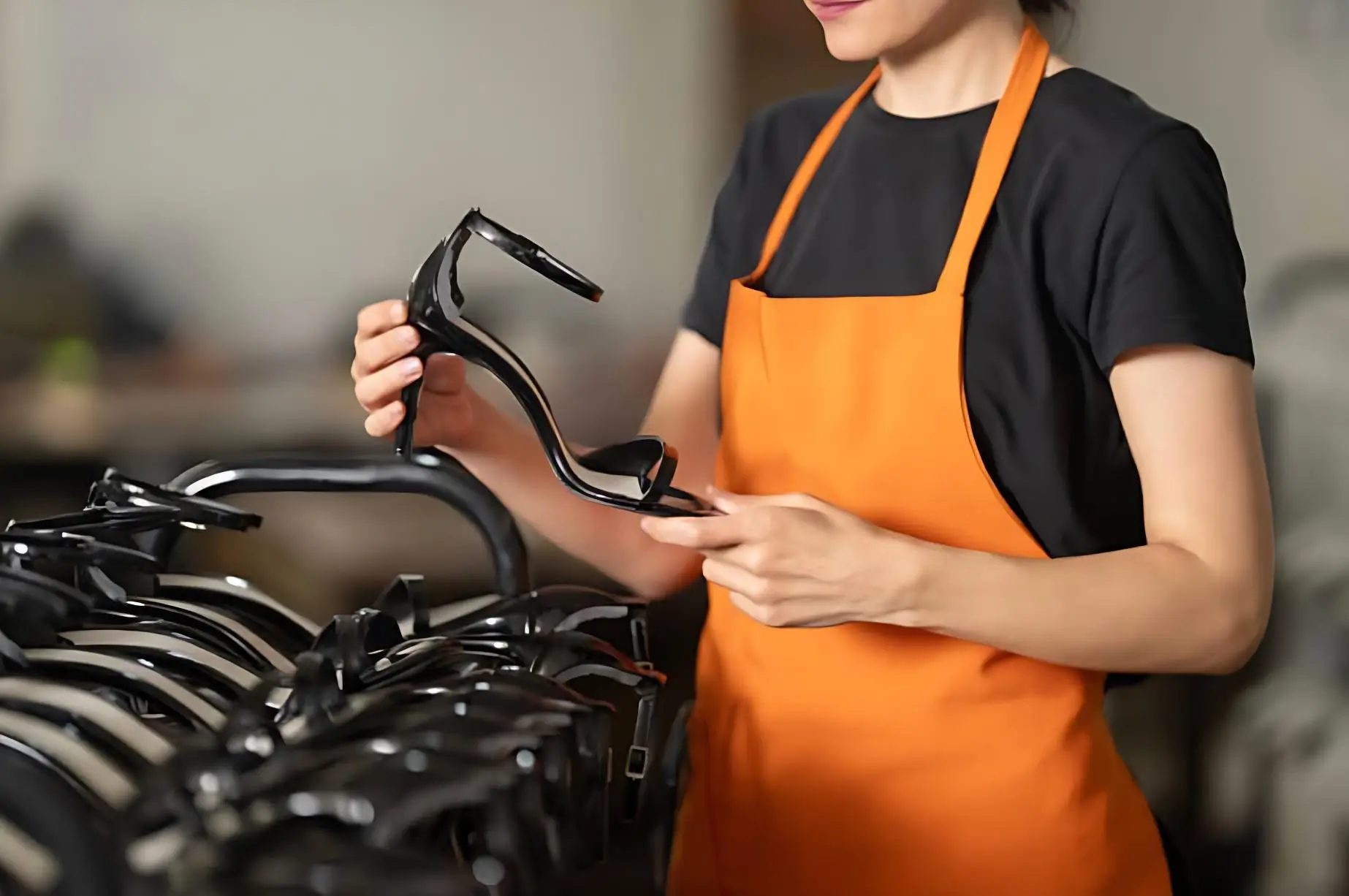As a brand owner or a buyer in the fast-paced footwear industry, you know that your reputation is your most valuable asset. And nothing can destroy that reputation faster than a batch of poor-quality shoes. A one-time factory audit is a good start, a necessary first step. But it’s not enough.
I’ve spent over a decade on the factory floor, working with global brands to build and scale their footwear lines. I can tell you from firsthand experience that true quality control in shoe manufacturing is not an event; it’s a daily, ongoing process. It’s a culture. It’s an obsession with the details that separate a shoe that gets returned from a shoe that gets rave reviews.
This guide is my practical, no-fluff playbook. I’m going to take you beyond the factory audit and show you how to implement a robust, multi-stage QC system in your shoe supply chain. We’ll cover everything from setting clear standards to leveraging data for continuous improvement, all to ensure that every pair of shoes that carries your name is a product you can be proud of.
A World-Class Shoe QC System: The 3-Pillar Framework
To move beyond just “checking boxes,” you need a structured approach. I’ve found that a world-class quality control system for footwear is built on three fundamental pillars. Getting these right is the foundation for everything else.
Pillar 1: Setting Clear, Measurable Quality Standards
You cannot control what you have not defined. This is where it all begins. Before a single piece of leather is cut, you and your manufacturing partner must create a crystal-clear, objective, and shared understanding of what “good quality” means for your specific product.
Your Tech Pack: The Foundation of Quality
Your tech pack is more than just a design document; it is the legal and technical foundation of your quality standards. A professional tech pack must include not just design sketches, but also detailed specifications for:
Materials: The exact type and grade of leather, the specific weight of the canvas, and the Pantone color codes for all components.
Construction: The required stitches per inch (SPI), the type of construction (e.g., cemented, Goodyear welt), and the specific adhesive to be used.
Measurements & Tolerances: The precise measurements for every part of the shoe, along with the acceptable tolerance for any deviation (e.g., “heel height must be 80mm +/- 2mm”).
Creating a Comprehensive QC Checklist (A Free Template)
A QC checklist is a practical tool that translates your tech pack into a series of pass/fail checkpoints for your inspectors. It is an essential part of any footwear quality control program. Here is a basic template you can adapt:
| Checkpoint Category | Specific Items to Check | Standard / Tolerance |
|---|---|---|
| A. Materials | Upper leather/fabric color consistency | Matches approved Pantone color swatch |
| Outsole material hardness (durometer) | 55-60 Shore A | |
| Lace quality and length | No fraying, length 120cm +/- 5cm | |
| B. Construction | Stitching alignment and SPI | Straight lines, 8-10 SPI |
| Sole bond strength (pull test) | Minimum 4 kg/cm | |
| Lasting symmetry (heel/toe alignment) | No visible skewing | |
| C. Cosmetic | Glue stains or marks | None visible from 30cm distance |
| Scratches or blemishes on upper | None larger than 2mm | |
| Logo application (embroidery/print) | Clean, centered, and fully intact | |
| D. Fit & Sizing | Internal length/width measurement | Matches spec sheet +/- 2mm |
| Paired shoes are identical in size/shape | Pass/Fail | |
| E. Packaging | Shoebox quality and labeling | Correct barcode, no damage |
| Carton packing assortment and count | Correct size run, 12 pairs per carton |
Understanding AQL (Acceptance Quality Limit) Standards
How many defects are too many? That’s where AQL comes in. It’s a statistical method used in the final inspection to decide if a whole batch should be accepted or rejected. For shoe manufacturing, a common AQL standard is:
Critical Defects: 0% (e.g., a sharp nail inside the shoe)
Major Defects: 2.5% (e.g., the wrong color, a delaminating sole)
Minor Defects: 4.0% (e.g., a single loose thread)
You must agree on these AQL levels with your factory and write them into your contract.
Pillar 2: A Step-by-Step Guide to Multi-Stage Inspections
Quality is not inspected at the end; it is built in at every stage. Now that your standards are set, it’s time to check them. A robust QC process means moving from a single final inspection to a series of checkpoints throughout the entire shoe production process.
Stage 1: Incoming Material Inspection (IMI) – Stop Problems at the Source
This is one of the most overlooked but highest-impact steps. Before the production line even starts, every single material that arrives at the factory must be inspected. This includes:
Leather: Checking for correct thickness, color consistency, and excessive natural defects.
Textiles/Canvas: Checking for correct color, weight (grams per square meter), and any weaving defects.
Outsoles: Checking for correct color, hardness (using a durometer), and any molding defects.
Hardware (Eyelets, Zippers): Checking plating quality and functionality.
Catching a problem here can save you from rejecting thousands of finished shoes later on.
Stage 2: During Production Inspection (DPI) – Catching Defects Early
A DPI is usually conducted when about 20-30% of your order is produced. The goal is to walk the production line and catch any systematic problems before they affect the entire batch. This is your early warning system. Key checks include:
Cutting Accuracy
Stitching Consistency (SPI, alignment)
Lasting Symmetry
Adhesive Application (Bonding)
If you find a problem here, you can correct it and save the rest of your production run.
Stage 3: Final Random Inspection (FRI) – Your Ultimate Insurance Policy
This is the final and most critical inspection, usually performed when the goods are 100% produced and at least 80% packed. An independent inspector will use your QC checklist and AQL standard to conduct a thorough examination of a random sample.
My strongest advice: Never, ever pay your final balance until you have received a passing FRI report from an inspector you trust. This is your ultimate leverage.
Pillar 3: Using Data to Build a Smarter Supply Chain
The goal of a great QC system isn’t just to catch defects; it’s to prevent them from happening in the first place. This is where you use the data from your inspections to make your supply chain smarter, more efficient, and more reliable over time.
From Defect Reports to Actionable Insights
Your inspection reports are a goldmine of data. Don’t just file them away. Analyze them to look for patterns, track the factory’s performance over time, and share this analysis with your partner. A great factory will be eager to work with you to find and fix the root causes of any recurring problems.
The Role of Technology: AI-Powered Inspection & Digital Platforms
The future of quality control is digital. Forward-thinking manufacturers are now using technologies like AI-powered vision systems to detect cosmetic defects with superhuman consistency, and digital QC platforms that allow for real-time communication and decision-making from anywhere in the world.
Frequently Asked Questions
1. Beyond a basic factory audit, what does a truly effective Quality Control (QC) process for shoes actually look like on a daily basis?
That’s the key question. A great QC process isn’t a one-time event; it’s a multi-stage system. At JINHUA, it starts with a rigorous Incoming Material Inspection (IMI)—we test everything from the leather’s thickness to the outsole’s flex resistance before it ever touches the production line. Next, our inspectors are on the floor for During Production Inspections (DPI), checking critical points like stitching accuracy and sole bonding in real-time. Finally, we welcome a Final Random Inspection (FRI) from your own third-party team before shipment. This proactive, three-stage approach is the only way to move from simply finding defects to actively preventing them.
2. My brand is focused on high-end products. Can a factory in China truly match the quality of European or American manufacturing?
This is a common concern, and the honest answer is: it depends entirely on the factory, not the country. The era of “Made in China” meaning low quality is long over. Many of the world’s top luxury and performance brands manufacture here for a reason. The key is finding a partner with a culture of quality. For example, for a luxury leather boot, it’s not just about the material; it’s about the craftsmanship in the lasting process and the precision of the stitching. We’ve built our reputation on this, which is why we have dedicated production lines and veteran QC teams who are obsessed with these aesthetic details. The quality comes from the process and the people, and we are confident ours are world-class.
3. We’re a growing brand and worried about meeting high MOQs. How can we ensure quality without placing a massive, risky order?
We understand this challenge completely—in fact, we’ve built our business model to solve it. The solution is to find a partner who offers flexible MOQs and believes in growing with you. For new brands, we recommend starting with a smaller, more manageable production run. This allows you to test the market and establish your quality standards without a huge upfront investment. Crucially, our QC process is the same whether you order 500 pairs or 50,000 pairs. Quality is a non-negotiable standard, not a function of order size. We even offer sample fee refunds on first bulk orders to make your initial investment risk-free. Our goal is to build a long-term partnership, and that starts with helping you succeed from day one.
Your Action Plan: The 5 Non-Negotiable Rules for Quality Success
I know that building a comprehensive QC system can seem daunting. But let me be direct: from my 15+ years of experience, this is the single most important investment you will ever make in your brand’s future. True quality control isn’t a one-time audit you can forget about; it’s a daily, relentless obsession.
To turn theory into action, here is the simple, 5-rule action plan that I share with every brand partner we work with. Internalize these, and you will be ahead of 90% of your competition.
1. Be Obsessively Specific: Your Tech Pack is a Legal Document.
Your tech pack is not just a “guide”; it’s the bible. It’s the legal and technical foundation for your quality standards. Don’t just say “brown leather”; specify “full-grain cow leather, 1.4-1.6mm thickness, Pantone 19-1118 TCX.” Don’t just say “good stitching”; specify “8-10 stitches per inch (SPI).” Never, ever assume a factory knows what you mean. If it’s not in the tech pack, it doesn’t exist.
2. Inspect at Every Gate, Not Just at the Finish Line.
Waiting until the final inspection to find problems is the most expensive mistake you can make. You must implement checkpoints at every critical stage. This means a rigorous Incoming Material Inspection (IQC) to reject bad materials before they’re cut, a proactive During Production Inspection (DPI) to catch process errors early, and a final Pre-Shipment Inspection (FRI) to confirm the finished product. This isn’t micromanagement; it’s smart risk management.
3. Hire Your Own Inspector: Trust, But Always Verify.
This is non-negotiable. A good factory will have its own internal QC team, but that team works for the factory, not for you. Your own independent, third-party inspector is your unbiased eyes and ears on the ground. They work for you. Their only job is to protect your interests and enforce your quality standards. The few hundred dollars you spend on an FRI is the best insurance policy you will ever buy.
4. Turn Data into a Weapon for Improvement.
Your QC reports are not just pass/fail documents; they are a goldmine of business intelligence. Treat them as such. Analyze the data to identify recurring defect patterns. Is it always the same stitching machine causing problems? Is one material supplier consistently delivering off-color goods? Share this data with your factory partner. A true partner will be grateful for these insights and work with you to find and fix the root causes, making your entire supply chain stronger over time.
5. Partner with a Factory That is as Obsessed with Quality as You Are.
At the end of the day, you can’t force a factory to care. The key to long-term success is to find a manufacturing partner who shares your values. They should see your detailed tech pack and your rigorous QC requirements not as a burden, but as a welcome challenge and a sign of a professional partnership. They should be as proud to produce your shoe as you are to sell it. This is the ultimate goal: a shared obsession with creating a great product.
Ready to Partner with a Quality-Obsessed Expert?
At JINHUA, we believe in making shoes and boots you can trust every day. We don’t just follow a checklist; we live and breathe the entire footwear production process. We know that what separates a good shoe from a great one is a relentless obsession with the details.
It’s why we combine decades of traditional craftsmanship with the latest in modern technology to create shoes and boots crafted for comfort and style. It’s why our veteran QC team treats your brand’s reputation as if it were our own. And it’s why we’re trusted by leading brands to deliver shoes and boots built to last for years.
If you’re looking for a manufacturing partner who is as passionate about the process as you are about your brand, I would genuinely love to talk.
Got a project in mind? Let’s turn it into reality.
You can start the conversation by reaching out to our expert team through your preferred channel below.
📧 Email: sales@jinhuashoes.com
(You’ll get personalized, expert feedback within 12 business hours.)



